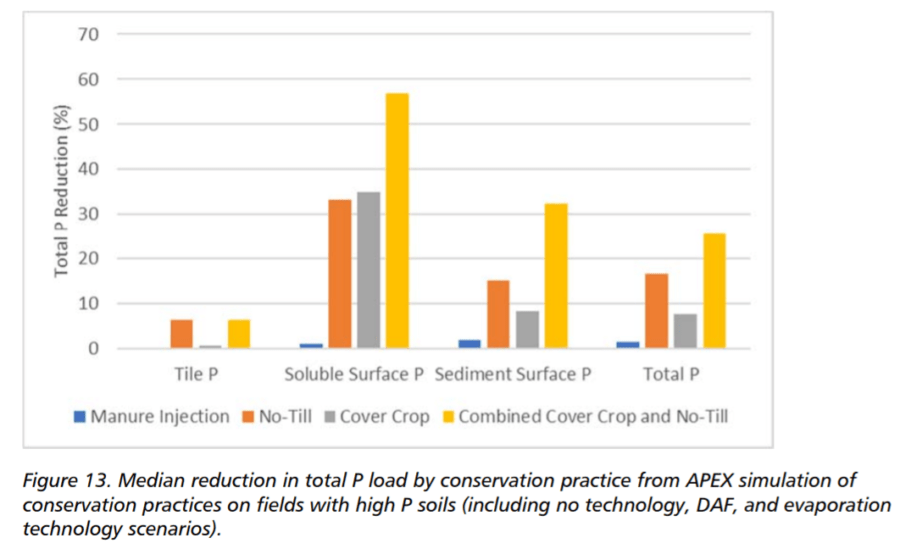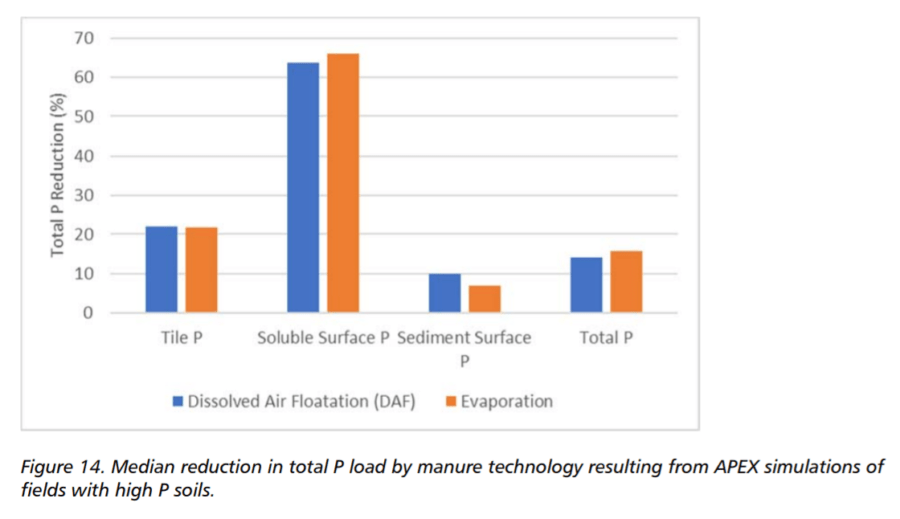Determining the efficacy of field practices and manure management to reduce phosphorus losses from tile-drained agricultural fields
Project Summary
This project, conducted in partnership with Stone Environmental and Newtrient, LLC, developed a robust model to represent edge-of-field phosphorus losses from tile-drained fields. The model was used to determine the potential for conservation practices and innovative manure management technologies to reduce nutrient pollution to nearby waterways.
The model was calibrated using data from six tile drain monitoring stations in Vermont, five edge-of-field monitoring sites in Vermont, and one site in New York with both tile and surface monitoring data. Using the model, the project team determined potential reduction in tile and surface flow phosphorus losses resulting from the following management scenarios:
Field practices
- Manure injection
- No till
- Cover crop
- Cover crop combined with no till
Manure management techniques
- Dissolved air flotation – chemical inputs used to aggregate small colloidal suspended solids into larger flocs for separation, dewatering, and removal into a stackable pile. This separates manure into solids and tea water.
- Evaporation – Manure is separated into solid and water components that are then heated, sterilized, and distilled. Results are coarse fiber product, dry solid manure product, liquid ammonia, and relatively “clean” water.
Key results
- Phosphorus reductions varied based on field management. The model showed that the greatest field benefits came with combined no till and cover crop management, with about 25% total phosphorus reduction.
- Simulated phosphorus reduction results for innovative manure management techniques were promising, with over 20% total phosphorus reduction in tile flows, and over 60% soluble phosphorus reduction in surface flows.
- Other benefits of innovative manure management technologies include:
- generation of new manure-based fertilizer products that are both storable and transportable,
- placement where and when the nutrients are needed,
- export and/or sale of these products, and
- phosphorus reduction.
Other takeaways
- This project addressed several research needs identified in the 2017 Vermont Subsurface Agricultural Tile Drainage Report.
- This work represents an important step toward quantifying the benefits of field practices and manure management techniques in improving water quality in the Lake Champlain Basin.
The full LCBP technical report is available at this link.

